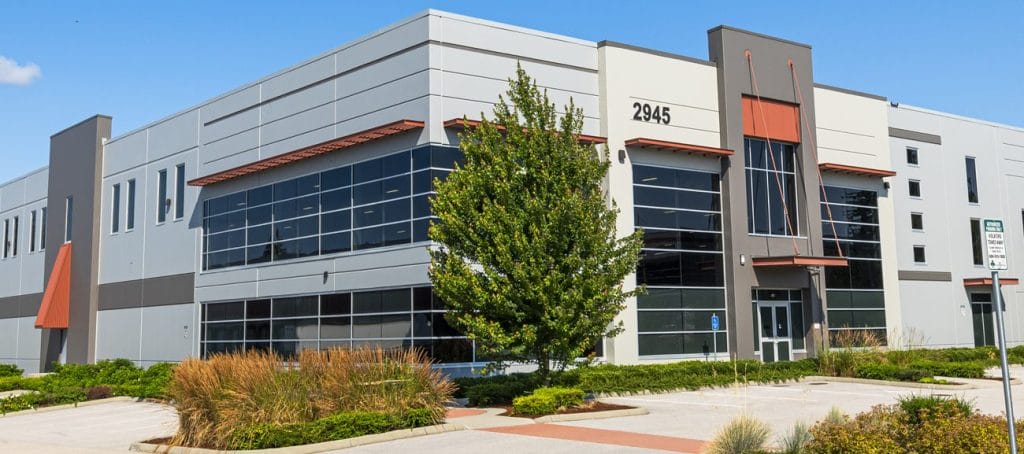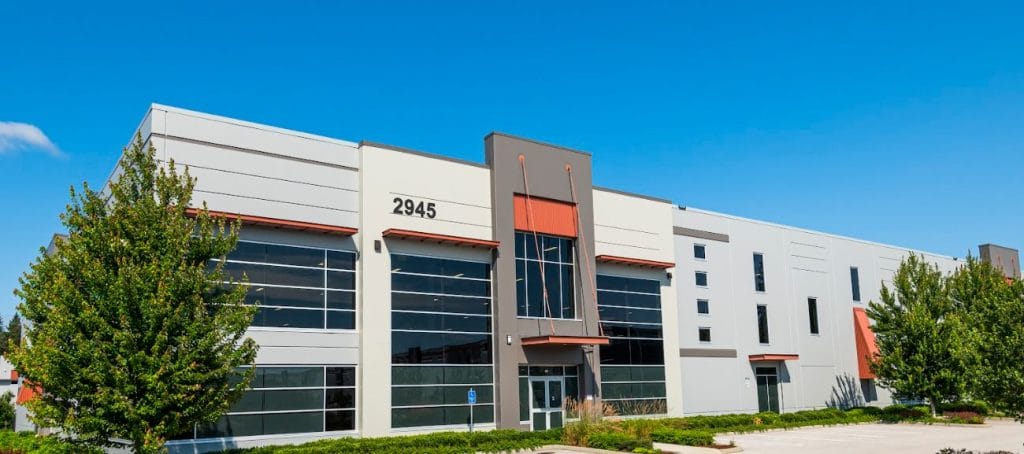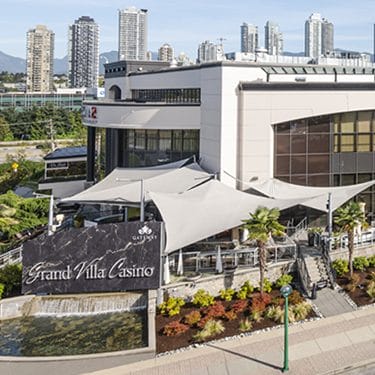From safety planning, prep work, and restoration, there are numerous factors that go into the cost of painting a commercial property. This guide will help you better estimate the price per square foot of painting costs for your building.

Budgeting for your commercial painting project may seem like a daunting task, but it doesn’t have to be. Let us walk you through the various factors and situations that will undoubtedly need to be considered when getting quotes from painting contractors. From the building’s height, the paint selection system, to the level of prep, repair, and restoration required, costs can vary widely. While the painting cost per square foot is a useful starting point, it’s just one piece of the puzzle. Whether you’re working on a high-rise, warehouse, or strata complex, working with an experienced Vancouver painting contractor can help ensure your budget is accurate and the project runs smoothly from start to finish.
From prep to paint: What it takes to professionally paint a commercial building:
Each commercial painting project is unique, with its own challenges and complexities requiring careful planning and attention to detail. Here’s a snapshot of the process you should expect from your contractor from start to finish:
Site evaluation and scope definition
Every professional painting job starts with a thorough site evaluation. Contractors assess the total surface area of the structure, identify the types and condition of building materials (known as substrate conditions), and review specific challenges like the height of the building, access issues, and environmental concerns.
*It’s important to note that when reviewing an estimate, the cost per square foot refers to the combined exterior wall surface area, and not floor space. Sometimes tools like Google Earth can provide a rough estimate of a building’s dimensions, but a detailed site visit is essential for creating a realistic and informed budget.
Next comes a careful and comprehensive definition of the full scope of work—specifically what is included, and what isn’t. For example, is the objective of the painting project to simply spruce up the siding and trim? Or are decks, balconies, and perimeter fences part of the job? On a high-rise, what kind of condition is the existing paint system in, and what kind of repairs could be required? Clear definitions speed up the preparation process, help prevent surprises later on, and allow for more accurate quoting.
Equipment planning
Accessing all areas of a building safely and efficiently is rarely as simple as it might seem at first glance. Power lines, height, uneven ground, and obstacles often make access one of the biggest logistical hurdles.
Depending on the building’s height and design, access equipment may include:
- Ladders for smaller-scale jobs or quick touch-ups
- Rope and anchor systems for tall or irregular structures
- Scaffolding or swing stages
- Scissor lifts or boom lifts for mid-rise buildings or areas with difficult access
Each of these systems requires certified operators and strict safety planning in accordance with WorkSafeBC regulations.
Staging and mobilization
Before any of the work begins, the site must first be prepared and staged for safety, access, and efficiency, including:
- Aerial equipment such as boom lifts, swing stages, or scaffolding
- Generators, hoarding, and other logistics equipment
- Temporary fencing for security
- Portable toilets for crews
In some cases, scaffolding alone can cost as much, or even more than, the painting work itself. This is especially true of high-rise buildings or sites with complex access requirements.
Surface preparation
Without the proper preparation work, even the best paint system won’t last. Depending on conditions, preparing the surfaces for painting may involve:
- Power washing dirt, moss, and loose paint
- Efflorescence treatment (a white powdery residue found on masonry surfaces)
- Scraping, sanding, or full paint removal to ensure proper adhesion
- Priming of bare or repaired surfaces before painting
Sealing and caulking around moisture-prone areas like windows, doorways, flashing, and joints can be a major factor in estimating costs, as it can be fairly time and labour-intensive. Often, this type of work will include:
- Sealing door and window perimeters to prevent water damage
- Replacing old, failing sealant or applying a new over-bead, if appropriate
- Addressing control and expansion joints, which may need full sealant replacement
- Performing aesthetic caulking for visual continuity, if desired
Repairs and restoration
Before painting can begin, all damaged surfaces defined in the scope definition must be repaired. The cause of the damage should also be assessed and addressed if possible to ensure the finished product is both attractive and long-lasting.
- Common repair and restoration work can include:
- Wood rot repair on siding, fascia, or door and window trim
- Concrete spall treatment and crack repairs
- Stucco patching, crack repair, and texture matching to maintain the desired appearance
Each repair or restoration issue may involve multiple trades, and depending on the scope, it can affect project timelines and budgets. It’s important to note that his type of restoration work would usually be considered above and beyond the standard per-square-foot painting estimates (especially when there’s a substantial amount of repair involved). But being aware of these potential add-ons early in the planning phase can help avoid unwanted surprises later on.
Paint selection
Choosing the right paint for the job is about more than just getting the colour perfect. Factors to consider include the substrate (is the building or material wood, concrete, or stucco) as well as seasonal factors such as exposure, weather, and moisture.
In many cases, high-performance protective waterproofing coatings are recommended for durability. While two coats of paint are standard, additional steps such as a full primer coat or a thicker, more durable (thicker) coat may be needed for proper protection.
Coordination of skilled trades
Often, painting projects will require collaboration with other skilled trades to get the job done right. For example:
- Roofers for repairing or replacing flashing or membrane tie-ins
- Glaziers for replacing glass and sealing affected windows and doors
- Electricians, if fixtures or lighting need to be removed or replaced
- Experienced painting contractors will coordinate these various trades to ensure an efficient workflow and minimize disruption.
So, what’s it going to cost?
When it comes to costing out a commercial painting project in Vancouver, no two buildings are the same, and so neither are the costs. The painting cost per square foot can vary depending on a variety of factors, including building height and access, permits, safety considerations, repair work needed, paint selection, and often, the weather.
Here’s a general breakdown of what you can expect based on building type.
High-rise buildings
Average range: $4.00 – $8.50 per sq ft
Factors include:
- Accessibility
- Level of restoration and prep work required
- Level of sealant replacement required
- Paint selection
- Specialty items required.
Townhomes
Average range: $2.50 – $4.50 per sq ft
Factors include:
- Accessibility
- Level of restoration and prep work required
- Level of sealant replacement required
- Paint selection
- Specialty items required.
Warehouses and industrial units
Average range: $1.50 – $3.00 per sq ft
Factors include:
- Accessibility
- Level of restoration and prep work required
- Level of sealant replacement required
- Paint selection
- Specialty items required
More than a paint job.
For strata members, building owners, and property managers, partnering with an experienced painting contractor in Vancouver like WCP Building Renewal does more than boost curb appeal. It provides peace of mind, protects your investment, and helps prevent costly repairs down the line.
With WCP Building Renewal, you can have full confidence that every detail will be handled with care and professionalism.
We ensure full compliance with WorkSafeBC safety standards and liability requirements, bring deep knowledge of local materials and climate challenges, and deliver warrantied workmanship you can trust.
Plus, our team specializes in efficient project management that minimizes disruptions to both tenants, businesses, and neighbours. When it’s time to paint, trust the professionals who know Vancouver best.

To us, you’re special
That means that while estimating the cost for painting a building on a per-square-foot basis is a helpful starting point, every project comes with its own set of challenges and requirements. It’s usually an accumulation of the unique details of the project and circumstances that are the greatest factors in the final price.
For more information on our professional painting services or to inquire about your next project, the WCP Building Renewal team can be reached at [email protected] or 604-420-5552.


